Quest: Band Conditions
This page is a work-in-progress. Many components are incomplete.
About
This chapter is about determining whether the HF and VHF frequency bands support long-distance (DX) communication (see also this Technician exam question).
Why should you care about that? If you want to hear, and eventually communicate with stations all over the world, you will want to learn about when band conditions are right to support your dreams.
Hams with HF privileges like to check in on band conditions from time to time since the conditions change regularly just like the weather. The band or frequencies we can use to communicate with different places vary by time of day, time of year, current and long-term solar conditions.
Here are some resources to see how the bands are doing. Your quest will be to try to determine whether you could communicate with some specific places.
HF propagation
The most user-friendly tool I know for checking on HF band propagation is https://hf.dxview.org.
This site combines multiple data sources about the HF bands and displays them in a convenient and attractive set of maps that change every few seconds. It’s fun to watch the animation change, but to dig deeper, you’ll want to see how conditions are from a particular perspective or location. Mouse over your location or another location, then click to set the perspective. Note that the app uses Maidenhead Locators, otherwise known as grid squares. The Ham Geography Quest takes a deeper dive into grid squares. My home shack is in FN10bt, so to see propagation conditions from my location, visit https://hf.dxview.org/perspective/FN10bt.
Notice that that the app has a convenient API call you can use to select a grid square without having to use the mouse: Simply replace ‘FN10bt’ in the URL with the grid square of your choice, like say Reykjavik in Iceland (HP94ad), so
- Choose your location on the map.
- Do band conditions seem favorable for you to talk with Paris, Rome, Tokyo? On what bands?
- How about New York City or San Francisco?
Here is another way to visualize band conditions. The hfpropagation.com site has some great visualizations about conditions on HF. For example, the following shows a map of RF propagation on the HF bands centered on New York City:
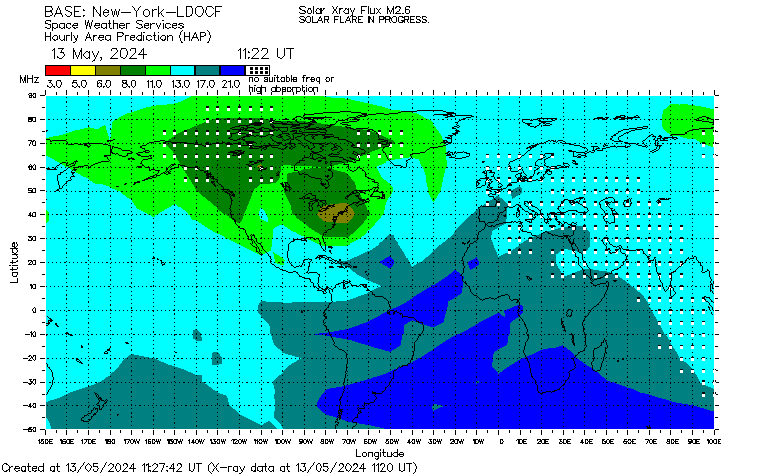 This maps shows you the maximum useable frequency (MUF) that would support communication to different parts of the world. At the time I’m typing this (1900 UTC on 2024-10-24), 15m (21 MHz) is open to Spain, Africa, and South America; 20m and 17m are open to those areas plus Eastern Europe. I should stop working on this and chase some DX!
This maps shows you the maximum useable frequency (MUF) that would support communication to different parts of the world. At the time I’m typing this (1900 UTC on 2024-10-24), 15m (21 MHz) is open to Spain, Africa, and South America; 20m and 17m are open to those areas plus Eastern Europe. I should stop working on this and chase some DX!
DX Clusters
Many hams enjoy “chasing DX” or trying to make as many contacts as possible with stations located at great distances.
There are computer servers connected to radios across the world that report information about what stations are being heard, on what frequencies, and where.
Here is a site that brings some of that information together in a visually attractive interface: https://holycluster.iarc.org.
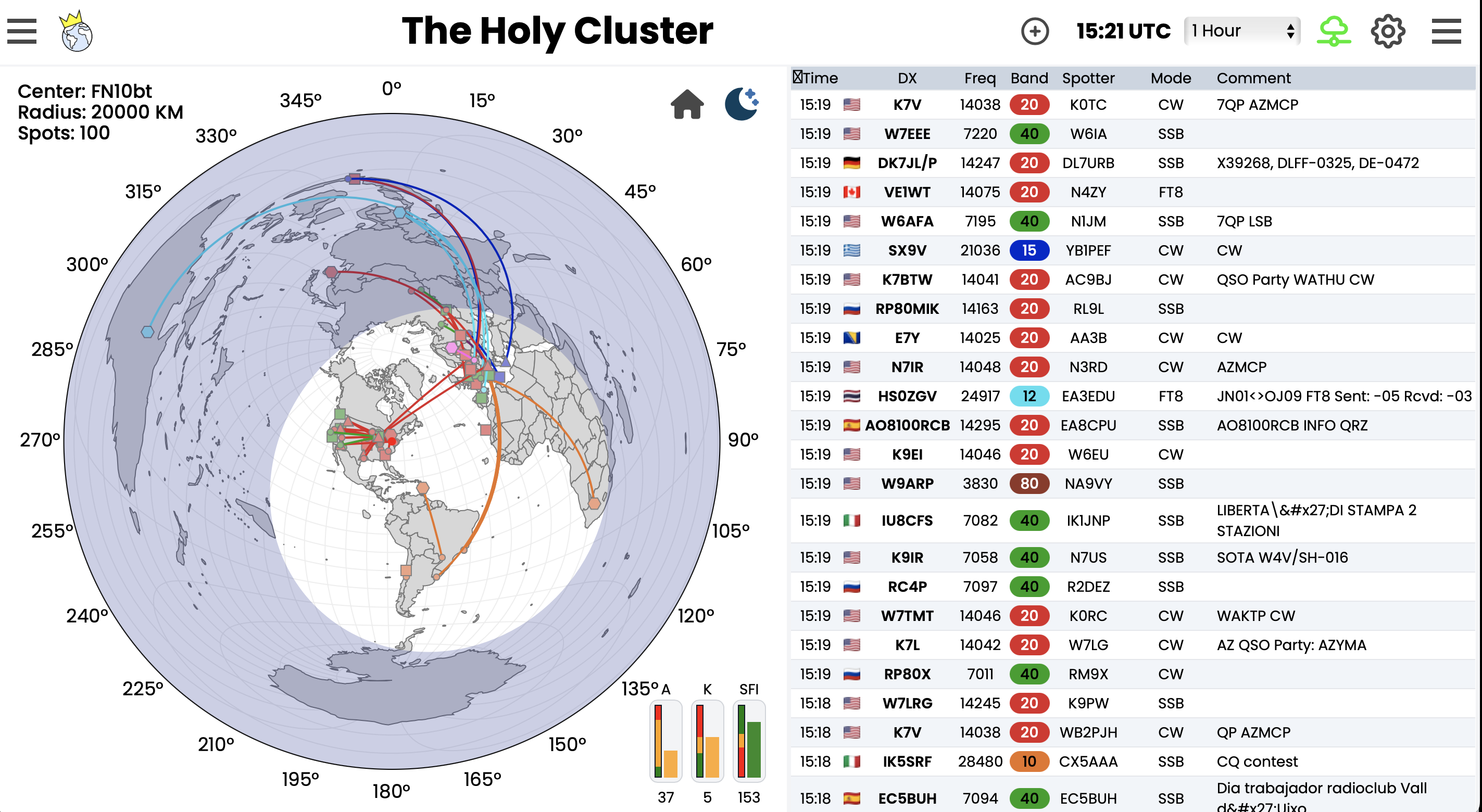
It looks like there are a lot of stations on 20m.
If you want to see what conditions are like in your neighborhood, visit https://grid.radio to find your [Maidenhead Locator](ham-geography.qmd#maidenhead-locator. Enter that into the Holy Cluster to generate a map for your location.
The circular map of the Earth is also called a Great Circle projection.
It’s convenient way for hams who have a directional antenna, like a Yagi antenna, to know where to point their antenna to talk to different parts of the world.
Note: The white circle indicates the part of the Earth that is currently in daylight.
VHF propagation
The dxview website also shows DX conditions on the 2m VHF band. These are typically much more short-lived than DX openings on the HF bands.
Here is a screenshot of conditions observed around 2023-04-18 around 1820 [UTC](lingo.qmd#uhf.
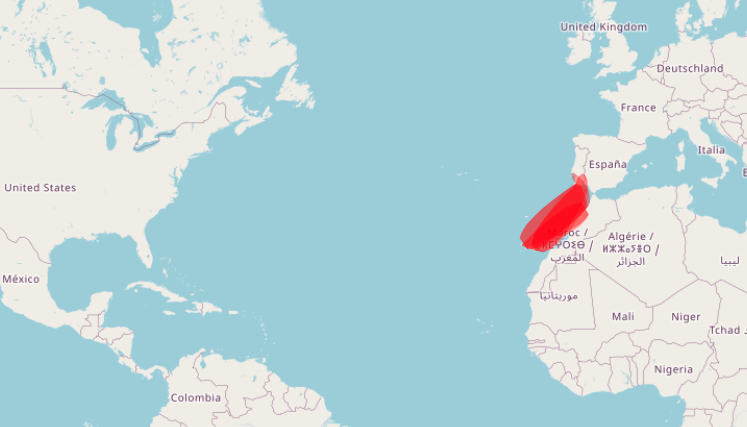
- Do band conditions seem favorable for you to talk with hams more than 50 mi from your home location?
- If so, where?
If you had the right conditions, you’d need a mobile or base VHF radio with higher power than an HT and a high gain (e.g. Yagi) antenna to chase VHF DX.
PSK Reporter
The pskreporter.info site aggregates thousands of signal reports from hams all around the world.
For example, here is a real-time map of conditions right now.
WSPR Rocks
The wspr.rocks site provides some terrific visualizations of the latest Weak Signal Propagation Report (WSPR) data.
Here is a map showing data about which WSPR stations are hearing one another on 2023-04-02:
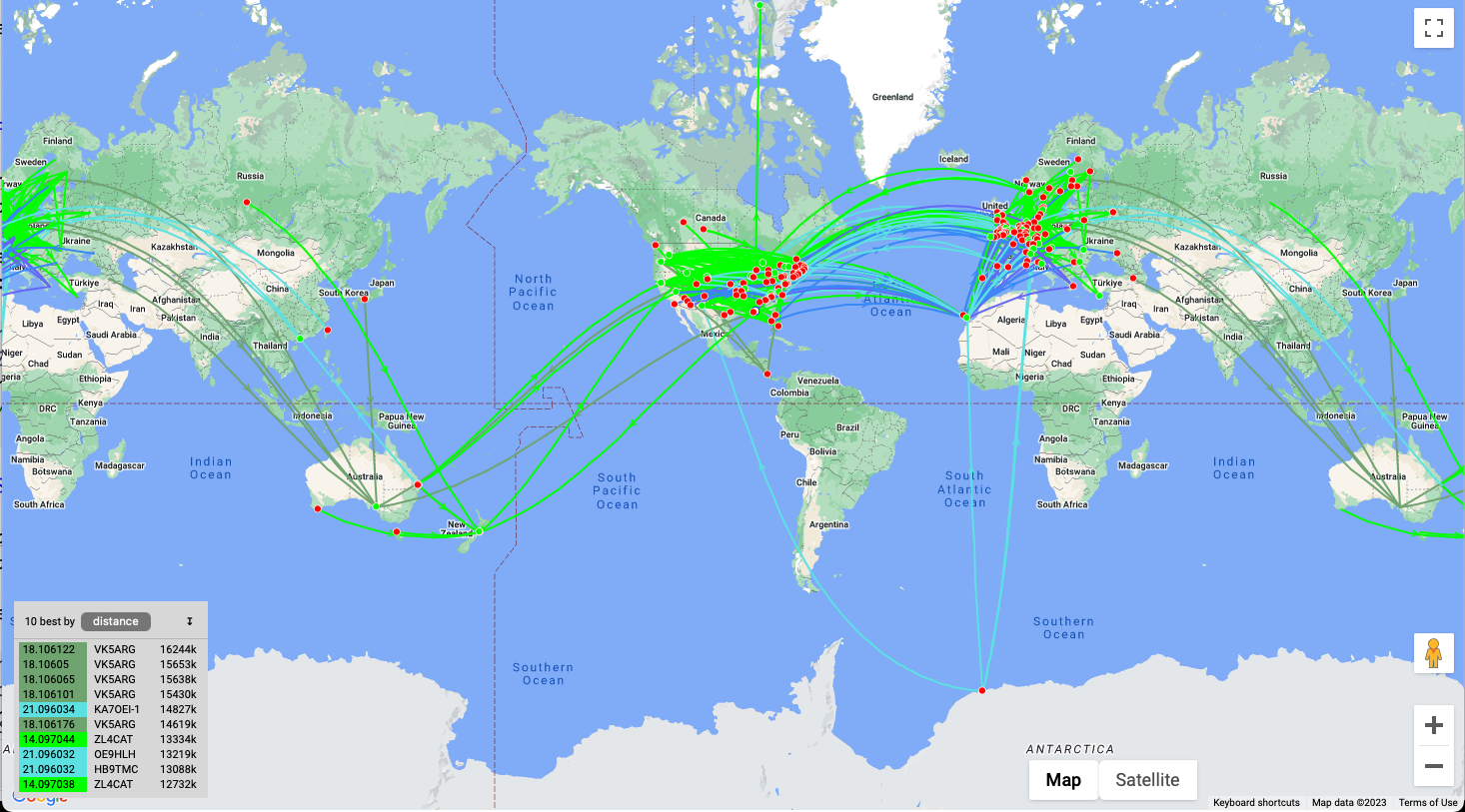
And here is a plot of frequency vs. distance.
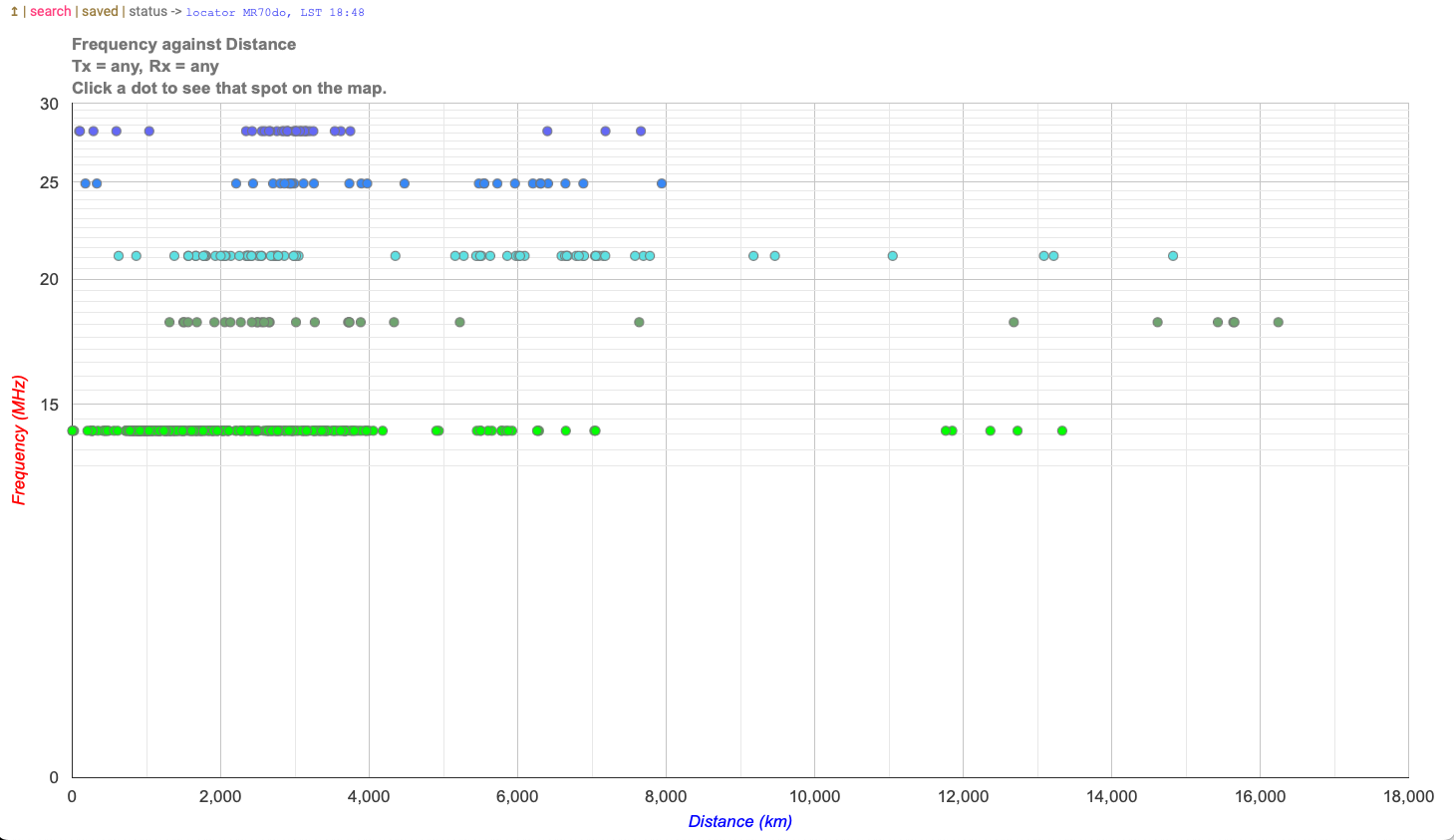
The 20m, 17m, and 15m bands were long (supporting long distance or DX contacts) at the moment this figure was taken.
WSPR is a mode that hams are using to cooperate with scientists who study the atmosphere and the effects of various astronomical events like eclipses on the atmosphere. Check out https://hamsci.org for more information about that.